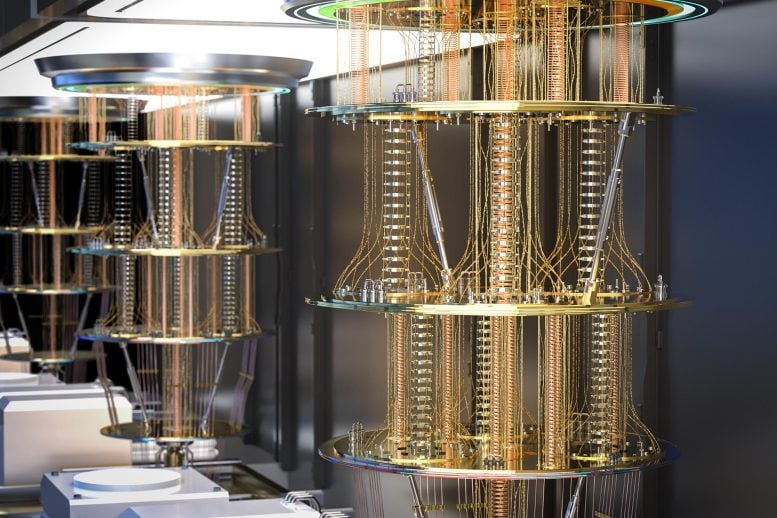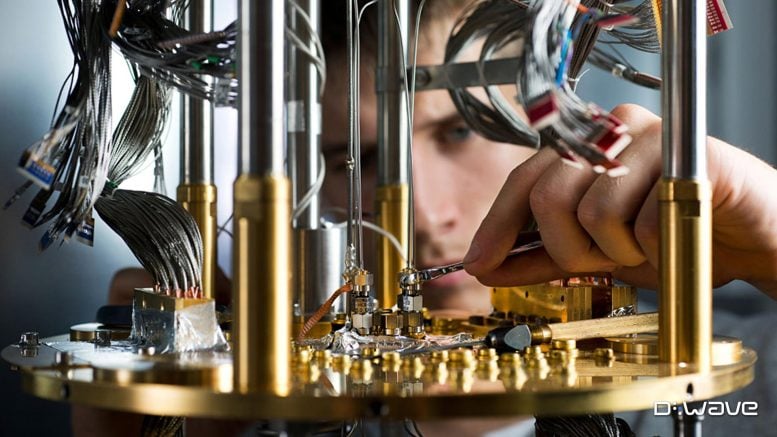
<span class="glossaryLink" aria-describedby="tt" data-cmtooltip="
” data-gt-translate-attributes=”[{"attribute":"data-cmtooltip", "format":"html"}]” tabindex=”0″ role=”link”>USC researchers have achieved a milestone in <span class="glossaryLink" aria-describedby="tt" data-cmtooltip="
” data-gt-translate-attributes=”[{"attribute":"data-cmtooltip", "format":"html"}]” tabindex=”0″ role=”link”>quantum computing by showing that quantum annealing can solve complex optimization problems faster than classical methods.
With advanced error correction, they beat top classical algorithms using a D-Wave quantum processor.
Quantum Advantage Demonstrated
In a major breakthrough, researchers at USC have shown that quantum computers can outperform even the fastest supercomputers at solving certain complex problems.
This leap forward, known as quantum advantage, was demonstrated using a specialized technique called quantum annealing. Think of it as a smarter way to search for great (not necessarily perfect) solutions to tricky puzzles that traditional computers struggle with. The results were recently published in <span class="glossaryLink" aria-describedby="tt" data-cmtooltip="
” data-gt-translate-attributes=”[{"attribute":"data-cmtooltip", "format":"html"}]” tabindex=”0″ role=”link”>Physical Review Letters.
“The way quantum annealing works is by finding low-energy states in quantum systems, which correspond to optimal or near-optimal solutions to the problems being solved,” said Daniel Lidar, corresponding author of the study and professor of electrical and computer engineering, chemistry, and physics and astronomy at the USC Viterbi School of Engineering and the USC Dornsife College of Letters, Arts and Sciences.
Shift Toward Approximate Optimization
For years, scientists have tried to prove that quantum computers can scale up and keep beating classical systems as problems get bigger. This study takes a fresh approach by shifting the focus away from finding perfect solutions and instead aiming for near-perfect answers, which are often more than good enough in the real world.
This kind of “approximate optimization” is especially useful in areas like finance, logistics, and <span class="glossaryLink" aria-describedby="tt" data-cmtooltip="
” data-gt-translate-attributes=”[{"attribute":"data-cmtooltip", "format":"html"}]” tabindex=”0″ role=”link”>machine learning, where getting close to the best solution quickly is more valuable than spending tons of time chasing perfection.
By using quantum annealing, the researchers were able to find high-quality answers faster than the best classical algorithms—marking a major step toward real-world quantum computing.
Quantum annealing is a specific type of quantum computing that can use quantum physics principles to find high-quality solutions to difficult optimization problems. Rather than requiring exact optimal solutions, the study focused on finding solutions within a certain percentage (≥1%) of the optimal value.

Real-World Applications of Approximate Answers
Many real-world problems don’t require exact solutions, making this approach practically relevant. For example, in determining which stocks to put into a mutual fund, it is often good enough to just beat a leading market index rather than beating every other stock portfolio.
To demonstrate algorithmic quantum scaling advantage, the researchers used a D-Wave Advantage quantum annealing processor, a specialized type of quantum computing device installed at USC’s Information Sciences Institute. Like with all current quantum computers, noise plays a major role in spoiling quantum advantage in quantum annealing.
To overcome this problem, the team implemented a technique called quantum annealing correction (QAC) on the D-Wave’s processor, creating over 1,300 error-suppressed logical qubits. This error suppression was key to achieving the advantage over parallel tempering with isoenergetic cluster moves (PT-ICM), the most efficient current classical algorithm for comparable problems.
Benchmarking with Spin-Glass Problems
The study demonstrated quantum advantage by utilizing several research methods and focused on a family of two-dimensional spin-glass problems with high-precision interactions. “Spin-glass problems are a class of complex optimization challenges that originate from statistical physics models of disordered magnetic systems,” Lidar said. Instead of seeking exact solutions, the researchers benchmarked “time-to-epsilon” performance, measuring how quickly each approach could find solutions within a specified percentage of the optimal answer.
Toward Future Quantum Optimization
The researchers aim to extend their findings to denser, higher-dimensional problems and explore applications in real-world optimization. Lidar said further improvements in quantum hardware and error suppression could amplify the observed advantage. “This opens new avenues for quantum algorithms in optimization tasks where near-optimal solutions are sufficient.”
Reference: “Scaling Advantage in Approximate Optimization with Quantum Annealing” by Humberto Munoz-Bauza and Daniel Lidar, 23 April 2025, Physical Review Letters.
DOI: 10.1103/PhysRevLett.134.160601
About the study: The study was co-authored by Humberto Munoz-Bauza of the <span class="glossaryLink" aria-describedby="tt" data-cmtooltip="
” data-gt-translate-attributes=”[{"attribute":"data-cmtooltip", "format":"html"}]” tabindex=”0″ role=”link”>NASA Ames Research Center and Lidar.
The study was supported by: Defense Advanced Research Projects Agency (<span class="glossaryLink" aria-describedby="tt" data-cmtooltip="
” data-gt-translate-attributes=”[{"attribute":"data-cmtooltip", "format":"html"}]” tabindex=”0″ role=”link”>DARPA) Grants HR00112190071 and NASA-DARPA SAA2-403688, U.S. Army Research Office Grant W911NF2310255, NASA.
Never miss a breakthrough: Join the SciTechDaily newsletter.
